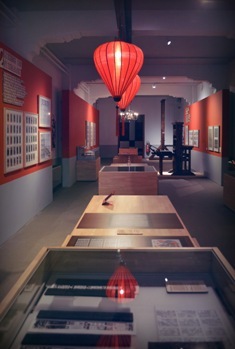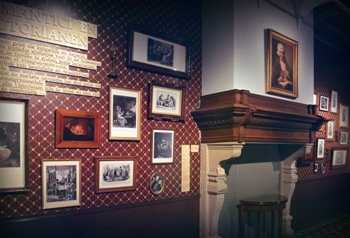5 of Hearts
5 of hearts is the permanent exhibition of the museum. It shows the history and use of the playing card in five steps:
 1. The devil's picture book
1. The devil's picture book
At the end of the 14th century the card game arrives in Europe. In no time, it becomes so popular it's dangerous. Card gambling games lead to quarrels, fights, blasphemy, and in some cases even to manslaughter or murder. As a result, the Church comes to view the deck as an invention of the devil. Cards therefore get a bad reputation and are often thrown into the fire.
2. Learning and pleasure
Although the card game has a hard time shaking off its bad reputation, no one is able to stop its progress. On the contrary, people continue to gamble. Each region will have its own typical cards and new games emerge that prompt players to use their wit and outsmart their opponents. Meanwhile, artists explore the game as a source of inspiration. Furthermore, cards are a valuable help for the satirist and serve as a handy learning tool.
3. Freedom or death
The French Revolution (1789) does away with the old society and sends the king to the guillotine. Likewise, kings must disappear from the deck, as the Revolution employs the card game to promote its ideals. Napoleon continues this and has himself immortalised as the King of Diamonds. Meanwhile, Europe falls prey to wars. In these uncertain times, cartomancy* is booming.
*Fortune-telling using a deck of cards
 4. Romantics and Victorians
4. Romantics and Victorians
In the 19th century, we witness the rise of the bourgeoisie. Typical living room and family games emerge, such as quartets, old maid or question-and-answer. The popularity of card clubs and competitions is growing strongly. Whist enjoys the highest reputation, as it is considered to be a good exercise in mental gymnastics. Needless to say, not all Victorians are that innocent and neither are all card games...
5. The back
Developments in printing technology provide increasingly fine cards. Aces get a trim, the figures more colour and detail. The back is thoroughly renewed in the 19th century and now comes in literally hundreds of different designs and colours. The back of the playing card is also discovered as an advertising medium. Publicity on playing cards becomes prevalent.
Couple your visit to the 'pressure in the museum' programme. These are demonstrations of historical printing presses.

